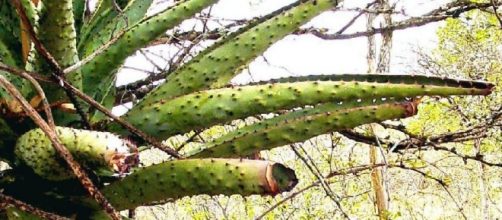In October 2015, South Africa Minister of Environment, Mrs. Edna Molewa released the draft Biodiversity Economy Strategy of the country for public comment via government gazette. The draft strategy was approved by the South African cabinet in July this year.
The aim of the strategy, which encompasses the period ending 2030, is a long-range initiative to add to the gross domestic product through an increased contribution from the biodiversity sector. Placing a value on tourism and conservation makes good economic sense and will hopefully lead to successful, responsible and sustainable conservation.
South Africa has some naturally occurring biological species that have a large potential for generating employment and new business whilst utilizing readily available resources. The plunder of resources is discouraged, so the strategy makes provision for participants to be accountable for achieving sustainable targets. To facilitate this, the Transformative Enabling Interventions, will determine future requirements.
Government and private sector responsibilities will be discussed via the establishment of a National Bioprospecting Forum. The overall aim is to develop rural based business, whilst addressing constraints and remaining ecologically friendly and fair to stakeholders.
Some products are already being used, but there is room for expansion, particularly if regulated to ensure sustainability in the future.
These products include:
- Aloe ferox (bitter Aloe)
- Bee products
- Aspalathus linearis (rooibos), and
- Pelargonium sidoides (the South African Geranium)
Bitter Aloe
The Bitter Aloe has been used for hundreds of years and interestingly, has been found in a rock painting that dates over 250 years. Extracts from the plant can be used in laxatives and in the treatment for arthritis. The wound healing properties have resulted in health drinks and the soft leaf flesh is used in the cosmetic industry. At present, the Aloe ferox is listed on CITES appendix ii, which means they are not currently threatened, but they might become so unless strongly regulated.
Bees
There are two races of honey bees that occur naturally in South Africa.
These are Apis mellifera scutellata, the African bee and Apis mellifera capensis, the Cape bee. According to Robin Crewe et al, 2009, there are large natural stocks of bees in Africa but conservation is important so that the mistakes made in Europe do not occur through commercial use.
Rooibos
Rooibos has been in use in South Africa since the 1700s and is valued for medicinal effects. One of the most valuable properties is that of the potential cholesterol-lowering effect the tea can have on humans. The plant is an important source of anti-oxidants. The plant occurs naturally in the Cape Floristic Region of South Africa, which may become stressed as a result of future climate change. The plant was historically used by the SAN and Khoisan peoples who claim to be the rightful holders of the traditional medicinal knowledge of the plant.
The future harvesting expansion would surely have to benefit the San peoples.
Pelargonium sidoides (South African Geranium)
The plant has been used by the traditional people of South Africa for hundreds of years to treat chest illnesses such as bronchitis, coughs and throat infections. In the 1920s, Charles Stevens promoted the plant as a successful remedy in the treatment of his own tuberculosis. He was taken down in a campaign against quackery. However, more recent studies have shown that it is at least an effective treatment for bronchitis and clinical trials show that extract from the plant can reduce the severity of upper respiratory problems. According to the Red Data List, the plant is not threatened and is categorized under least concern.

